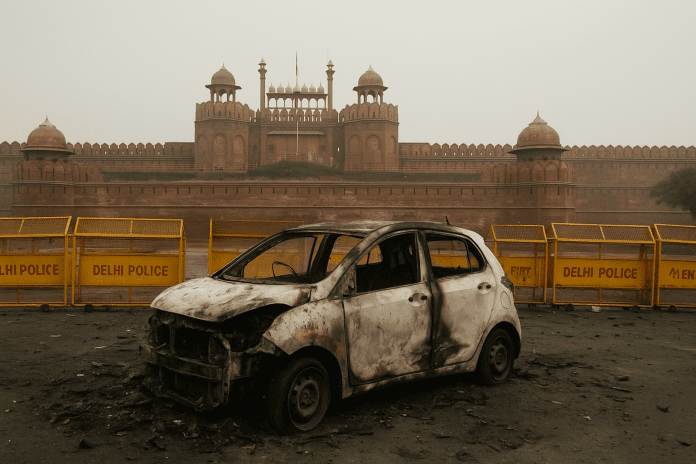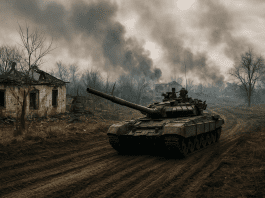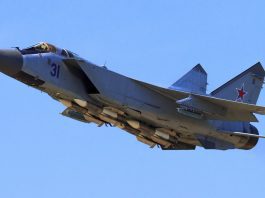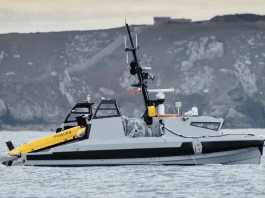A sudden explosion near Delhi’s famous Red Fort blast site has uncovered a shocking terror network linked to Pakistan-based Jaish-e-Mohammed (JeM). What makes this discovery even more disturbing is that the accused are doctors — professionals trained to save lives, now accused of planning destruction.
Red Fort Blast Exposes a Hidden Network of Jaish ‘Doctor Module’
The incident began when an improvised explosive device (IED) accidentally went off near the Red Fort, triggering panic and an immediate investigation. Officials soon confirmed that the Red Fort blast was not a random explosion but part of a larger terror conspiracy.
According to investigators, the IED was being carried in an i20 car when it exploded unexpectedly. This accidental Red Fort blast became the key that opened a massive investigation involving multiple security agencies.
U.S. Brokers Silence: Ceasefire Along India-Pakistan Border Marks Diplomatic Victory
Sources identified the main suspects as Dr. Omar and Muzammil, who reportedly traveled to Turkey after joining encrypted Telegram groups run by Jaish handlers. Their foreign trip, followed by their activities in India, has become central to the Red Fort blast investigation.
Security officials now believe the Red Fort blast was the turning point that helped them expose a larger terror plan that might have otherwise gone unnoticed.
NIA Takes Over Red Fort Blast Case; Raids Across Multiple States
The National Investigation Agency (NIA) has officially taken charge of the Red Fort blast case. The NIA, along with police teams from Uttar Pradesh, Haryana, Maharashtra, Jammu and Kashmir, and Delhi, has launched a multi-state operation to track down every member of the Jaish-linked “Doctor Module.”
According to officials, the accused doctors were part of a radicalized online network. They communicated secretly through Telegram, a messaging app known for its end-to-end encryption. This helped them evade detection for months until an accidental explosion exposed their activities.
Investigators say that after their Turkey trip, the handlers instructed the group to spread across India and identify potential targets in Faridabad, Saharanpur, and other key cities. Each doctor had a specific role in the terror plan that led to the Delhi blast.
India-US trade talks resume after steep tariffs linked to Russian oil purchases
Raids across these regions have led to the recovery of arms, ammunition, and electronic devices linked to the suspects. Investigators are now examining call records, chat histories, and digital footprints to reveal how the planners coordinated the attack.
An NIA officer said the incident has become a crucial lead in helping investigators understand the larger network. “This single event opened up layers of communication, funding, and planning that we hadn’t discovered earlier,” the officer explained.
So far, investigators have detained several individuals, including doctors from Faridabad and Jammu & Kashmir, whom Dr. Omar allegedly recruited. Each new arrest brings investigators closer to identifying the handler directing operations from abroad.
Turkey Connection Raises Global Security Concerns
As the Red Fort blast investigation moves forward, the Turkey connection has emerged as a key focus for Indian security agencies. Evidence shows that both Dr. Omar and Muzammil traveled to Turkey shortly before the explosion. Investigators are trying to determine if this trip served as a training or coordination mission with foreign handlers.
According to journalist Kamaljit Sandhu, “The instructions to the doctor module came from a handler after their Turkey visit. They received instructions through encrypted Telegram channels to disperse across India and pick targets. These directions clearly show that Jaish handlers overseas were directly involved.
Officials say the accused spent their time in Turkey receiving orders and preparing strategies, which they later executed in India — one of them leading to the Red Fort blast. The plan’s sophistication and the use of secure apps show how global terror networks exploit technology to stay undetected.
Investigators have recovered phones, laptops, and foreign travel records and are now studying them through forensic analysis. Early findings show that the Red Fort blast formed part of a much larger conspiracy rather than being an isolated accident.
Police have arrested multiple doctors and are questioning them about how they were recruited and how they communicated with overseas operatives. These individuals, once respected professionals, allegedly turned into facilitators of terror — a revelation that has stunned the medical community.
A senior officer said, “These doctors trained to heal, but they chose violence. The Red Fort blast exposes how radicalization reached even educated minds.”
The NIA is leading the investigation and coordinating with intelligence units to trace the Jaish-e-Mohammed network behind the Red Fort blast. With raids expanding across states, security forces are uncovering the entire structure of this doctor-led terror module.







